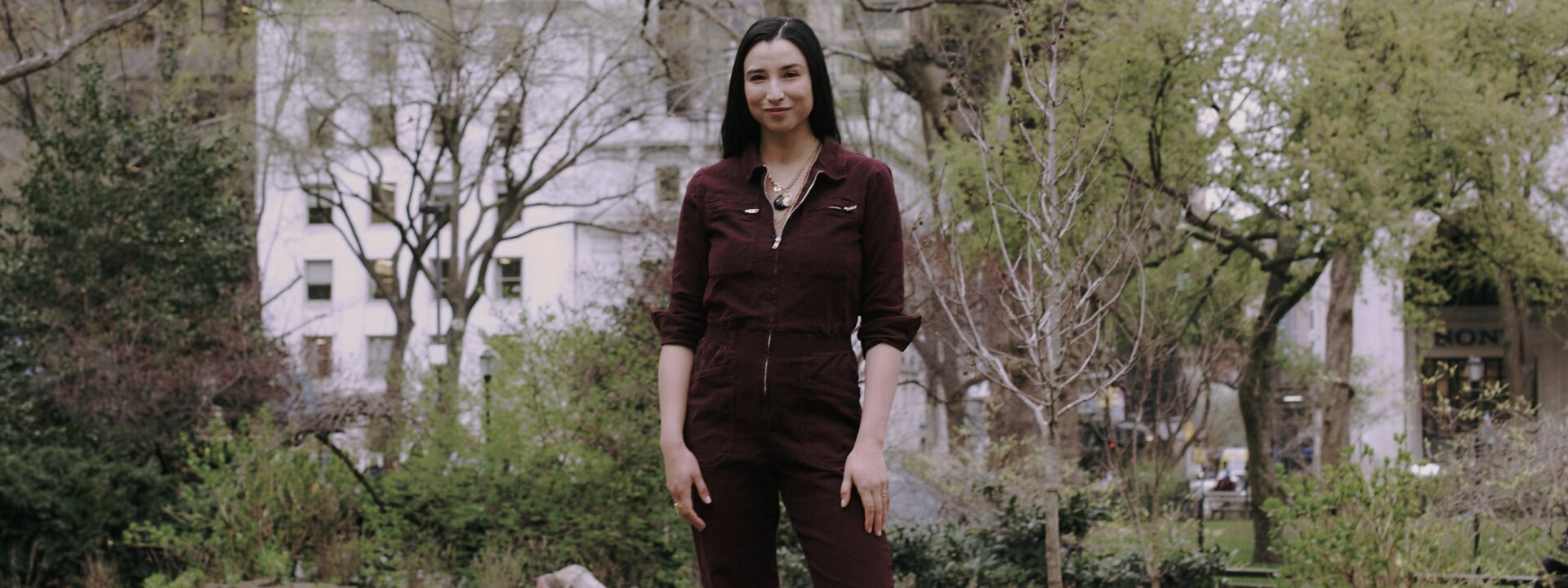For over a decade, I dreamed of creating an installation for Madison Square Park. Eleven years ago, as a landscape student at the New York Botanical Garden, I was assigned to sketch planting beds in a public park—I chose Madison Square Park. I was amazed by its horticultural beauty and complexity, and how it served the community with a design that nurtured both people and wildlife—something rare in a city like New York.
The park has a world-class arts program and an incredible horticulture program, and I envisioned these two aspects in conversation. As an artist, I bridge plant life and creative practice. In 2022, I approached executive director Holly Leicht to discuss merging these resources into one physical installation. Together, we developed the vision for Gardens of Renewal, a meditation and children’s garden now open on the Redbud and Sparrow Lawns.
Working with the park’s horticulture team, led by Stephanie Lucas, we studied hundreds of native plant species before selecting around 50 to tell a layered botanical story. I wanted the project to embody peace, harmony, and interconnection—reminding us that we’re part of both an ecological community and a human family.
The spiral became the central motif, an ancient symbol representing the journey back to one’s center. In Buddhism, it signifies life’s cyclical nature. I hoped visitors would experience it as a sanctuary—a meditative space planted with thousands of native species. The spiral’s narrative deepens toward the center, where the plants grow rarer and more threatened by climate change.
Beyond beauty, the work carries a urgent message: we’re in a climate crisis, facing mass extinction and eroded environmental protections. This is our greatest existential threat. The garden invites reflection—not just on reconnecting with nature, but on what we stand to lose.
Today, climate anxiety and disconnection from nature are widespread and painful. Capitalism and politics divide us, but that disconnection is an illusion we can undo. Our survival—of society, the planet, and our wellbeing—depends on recognizing we’re part of a larger ecological story.
The garden showcases this interconnectedness. Milkweed, the sole host for monarch butterflies, grows alongside native irises, St. John’s Wort, and plants once used as medicine for everything from depression to liver ailments. My hope is that these examples ease anxiety, spur urgency, and inspire action to protect these vital ecosystems.
Gen Z grieves the climate differently, but this Earth Day, let’s ask how we can each use our skills to foster a more harmonious planet—one where we remember we belong to the Earth, not the other way around.The idea of reciprocity is powerful, but there’s also a sense of disconnection and disempowerment working against us. Many people have been led to believe that climate collapse is too vast a problem to tackle—that it’s solely in the hands of fossil fuel companies and billionaires, and that smaller actions don’t matter. Another dangerous myth is that social movements require a single powerful leader. The truth is, they’ve always grown from collective action.
This garden—two small lawns in a big city on a big planet—is an act of resistance. It may not stop a new oil field from being drilled, but it will nourish your spirit. It will strengthen community. It will create vital habitat. It will offer space to explore, learn, and grieve. We need a radical reimagining of how we live, and where better to start than a garden, which has carried our culture’s dreams for thousands of years? This feels especially urgent in a time of deep political division.
When we first envisioned this project in 2022, it was meant as a resource for COVID recovery—a way to rebuild community and inspire hope for a freer world. But now, the political landscape has shifted, and this garden has taken on new meaning. Safe spaces, play, and experimentation are acts of defiance against authoritarianism. Art, song, dance, ritual, and joy are all ways to resist oppressive forces.
Gardens of Renewal is also a call to protect our public spaces. Our cities hold untapped ecological potential. Parks and shared landscapes must be part of the climate conversation, reminding us that we share this world with countless other beings. Native plants sustain our ecosystems, providing food and shelter for birds, bees, and butterflies—species we depend on, and which are now under grave threat.
For me, this garden is an offering to the earth, a prayer to restore balance—to our planet and to our culture.


